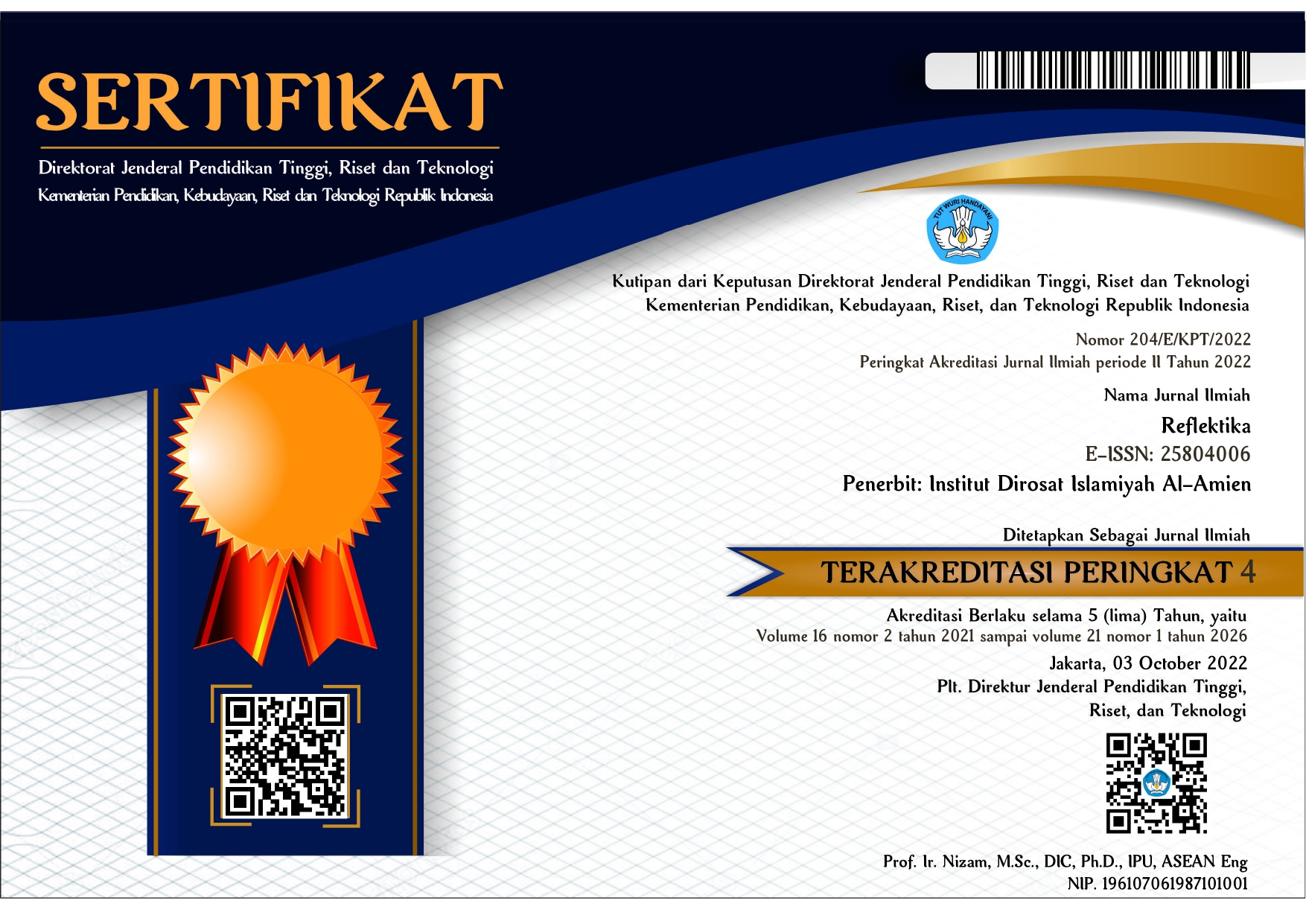HARUT DAN MARUT DALAM TAFSIR MODERN (Studi Komparasi Penafsiran Sayyid Qutub dan Wahbah Zuhaili)
Abstract
HÄrÅ«t and MÄrÅ«t are phenomenal examples or historical figures. From it arises several issues whether they are elements of humans or angels until their purpose is passed down to earth, with the existence of magic capable of divorcing husband and wife relationships. This paper focuses on: Who are HÄrÅ«t and MÄrÅ«t according to Sayyid Qutub and Wahbah al-Zuhaili and The methods used in the study use a descriptive qualitative approach, while the data collection technique uses library techniques by understanding books, articles that match the title of this study. According to Sayyid Qutb's interpretation that HÄrÅ«t and MÄrÅ«t were angels sent down by God as tests and trials for humans at that time. HÄrÅ«t and MÄrÅ«t said to be of the angelic element is based on the understanding that the word malacain, pronounced fathah, thus carries the influence of the interpretation that both are indeed elements of angels. Meanwhile, according to Wahbah al-Zuhaili's interpretation, that HÄrÅ«t and MÄrÅ«t are human beings, arguing and saying that lafadh al-malakain is a majaz/parable for one who is considered noble, because of obedience and good nature, so that it is considered an angel. Magic cannot be separated from the role of HÄrÅ«t and MÄrÅ«t teaching to humans. Both are distinguishing and explanatory that the prophet Solomon did not obtain his power and prophethood by magic, but was purely a gift from God in the form of a miracle.
Keywords
References
Departemen Agama RI. Al-Qur’an Dan Tafsirnya. II. Jakarta: Menara Kudus, 2008.
Hasan Al-Banna’. Risalah Ilaa Al-Syabaab. Mesir: Dar Al-Syihab, 1977.
Hidayatullah, Syarif. “Relasi Filsafat Dan Agama (Perspektif Islam).†Jurnal Filsafat 16, no. 2 (2006): 128–48. https://doi.org/10.22146/jf.31271.
Imam Ibnu Katsir. Tafsir Ibnu Katsir Juz: 21,22,23,24. Edited by Arif Rahman. Surakarta: Insan Kamil, 2015.
Jalaluddin As-Syuyuti. Al-Itqon Fii Ulum Al-Qur’an. Beirut: Dar Al-Fikr, 1979.
Kemas Badarudin. Filsafat Pendidikan Islam. Yogyakarta: Pustaka Pelajar, 2009.
Lexy J. Moleong. Metodologi Penelitian Kualitatif. Bandung: Remaja Rosdakarya, 2005.
M. Quraish Shihab. Tafsir Al-Misbah Pesan, Kesan, Dan Keserasian Al-Qur’an. Volume 15. Tangerang: PT. Lentera Hati, 2017.
Manna’ Khalil Al-Qattan. Mabahitsi Fii Ulum Al-Qur’an. Beirut: Mansyurat At-Ashr, 1977.
———. Studi Ilmu-Ilmu Qur’an. Edited by Mudzakir AS. Bogor: Litera Antar Nusa, 2013.
Marhaeni Saleh. “Filsafat Agama Dalam Ruang Lingkupnya.†Sulesana 6, no. 488 (2012): 2292.
Nashrudin Baidan. Wawasan Baru Ilmu Tafsir. Yogyakarta: Pustaka Belajar, 2011.
Sugiono. Metodologi Penelitian Pendidikan Kuantitatif-Kualitatif Dan R&D. Bandung: Alfabeta, 2010.
Suharsimi Arikunto. Prosedur Penelitian Suatu Pendekatan Praktek. III. Jakarta: Rineka Cipta, 2000.
Wahab Nur Kadri. “Dialektika Komunikasi Pada Debat Pilpres 2019 Dalam Perspektif Al- Qur ’ an.†Jurnal Dakwah Dan Komunikasi Islam El Madani 1, no. 01 (2020): 49–60.
DOI: 10.28944/reflektika.v14i1.954
Refbacks
- There are currently no refbacks.


.png)

